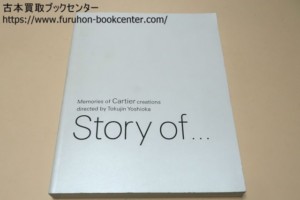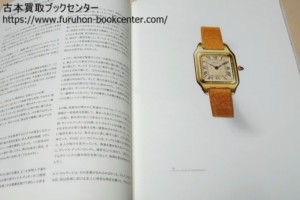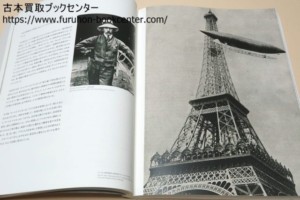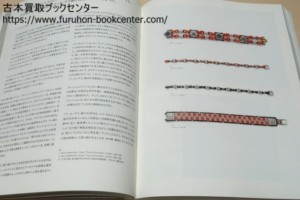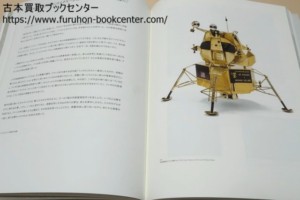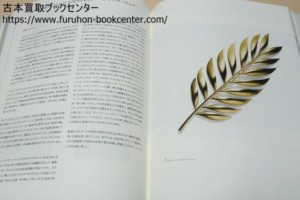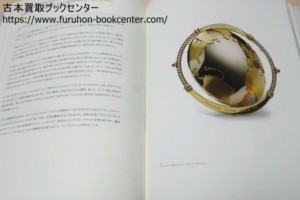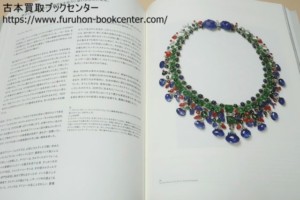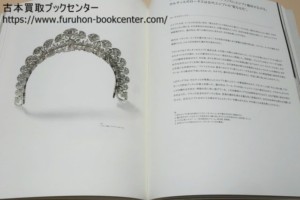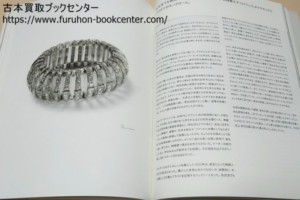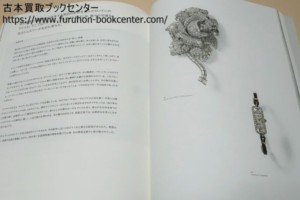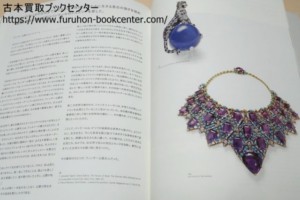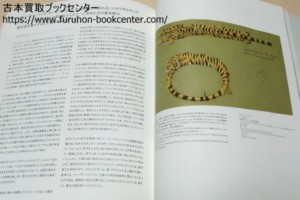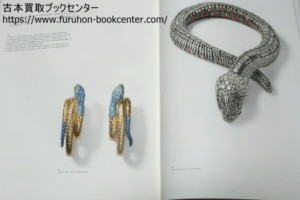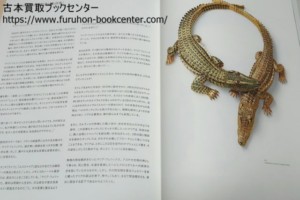こちらのページは日本の本にご興味をお持ちの海外の方向けの商品紹介ページです。買取商品の紹介ページとは異なります。International buyers.If you have any questions,please feel free to contact us.
Magnicent and flamboyantly fanciful, two crocodiles of pavé-set diamonds and emeralds unite to form a necklace you should imagine wrapped around the neck of the great Mexican movie icon Maria Félix it was designed for Many of the major pieces produced by the Maison Cartier have such wonderful stories attached to them, be they tiaras or jewellery sets, mystery clocks or cigarette cases. They reveal also a story of remarkable know-how passed down since 1847 with constant revival, a story of creativity inspired by a vast array of sources which, coming from the Far East, India, Russia or Art Deco, have steadily nurtured and augmented the range of patterns invented by its craftsmen, a story of fascination and dreams for all those enticed by these unique and incomparable jewels. The exhibition “Story of…” – Memories of Cartier creations at Tokyo National Museum embarks upon tracing all those different stories.
Rightly known as the “king of jewellers and jeweller to kings”, Cartier started to develop under the patronage of the imperial family during the Napoleon III era. In 1859, Empress Eugénie and Princess Mathilde were clients commissioning precious designs to its workshops. The Rue-de-la-Paix-based Maison next attracted all the courts of Europe, from England, Russia, Portugal, Spain or Belgium… Select pieces displayed in the exhibition have adorned the décolleté of the Duchess of Windsor or of Princess Grace of Monaco, and bedecked the costumes of Maharajahs. Cartier also mingled on several occasions with the literary world, as it created François Mauriac’s French Academician’s Sword in 1934 and Jean Cocteau’s in 1955.
Its prestigious collection of past renowned pieces has been gathered since 1983 and regularly displayed in worldfamous museums, aiming at preserving its own intangible heritage of expertise and artistry fervently passed on to the next generations of dexterous craftsmen. But at Cartier’s, tradition rhymes with innovation. The latest collections revealed Rue de la Paix clearly unfold this very innovation. It is also manifest in regular collaborations with contemporary designers. In 2004, Cartier called on Italian designer Ettore Sottsass to showcase its collection at the Daigoji Temple in Kyoto.
Today, a Japanese designer has been invited to interpret its history from a renewed perspective. Tokujin Yoshioka unravels a uniquely challenging choreography, as if staging a ballet with all the symbolic faces of Cartier’s living legacy, that eventually fades into some evanescent fragrant memory.
I look forward to this unprecedented encounter between a talented master of contemporary Japanese design and a jeweller emblematic of timeless French elegance – an encounter which embodies perfectly the spirit of Japan-France friendship whose 150th anniversary has just been commemorated. I wish to sincerely thank the organizers for this marvelous project, especially the director of Tokyo National Museum. I am convinced that, like the preceding epoch-making exhibitions in Japan at Tokyo Metropolitan Teien Art Museum in 1995 and at Kyoto’s Daigoji Temple in 2004, “Story of…” -Memories of Cartier creations shall impress the Japanese audience.



